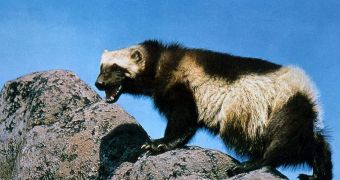For all their adaptations to catching prey and defending against predators, wolverines may be driven to extinction by human-induced global warming. This phenomenon, alongside climate change, is causing an earlier onset of spring, and higher temperatures, which both hinder the animals.
In order for mother wolverines to raise their young, they need to dig their den under a thick cover of snow, that lasts until well in the spring. But this is becoming impossible for the creatures, since spring comes early, and higher temperatures melt the snow layers above the den.
The situation is the same across the continental United States, say investigators. Temperatures are not only increasing here, but around the world, which means that animals needing similar conditions to survive may also be threatened.
The new investigation was carried out by investigators at the Boulder, Colorado-based National Center for Atmospheric Research (NCAR), who carried out computer simulation of how continued greenhouse gas emissions would affect the climate in which the wolverine habitats are.
“The researchers have combined regional-scale climate projections with knowledge of a single species and its unique habitat to examine its vulnerability to a changing climate,” scientist Sarah Ruth explains.
“This study is an example of how targeted climate predictions can produce new insights that could help us reduce the impact of future climate change on delicate ecosystems,” the expert goes on to say.
Ruth is the program director of the Directorate for Geosciences (DGS) at the US National Science Foundation (NSF). This directorate is in charge of funding NCAR studies.
The report shows that climate change will most likely use two main mechanisms for affecting the wolverine population – reducing/eliminating snow covers, and increasing average temperatures for the month of August to levels that are simply intolerable for the creatures.
“Species that depend on snow cover for their survival are likely to be very vulnerable to climate change,” explains the lead author of the new investigation, NCAR scientist Synte Peacock.
“It's highly uncertain whether wolverines will continue to survive in the lower 48, given the changes that are likely to take place there,” the team leader goes on to say. Details of the work appear in last week's issue of the esteemed scientific journal Environmental Research Letters.
Northern habitats are the most affected by climate change. Temperatures grow more the closer you get to the poles, which means that species living in the tundra or beyond the Arctic Circle are the most affected by global warming.

 14 DAY TRIAL //
14 DAY TRIAL //